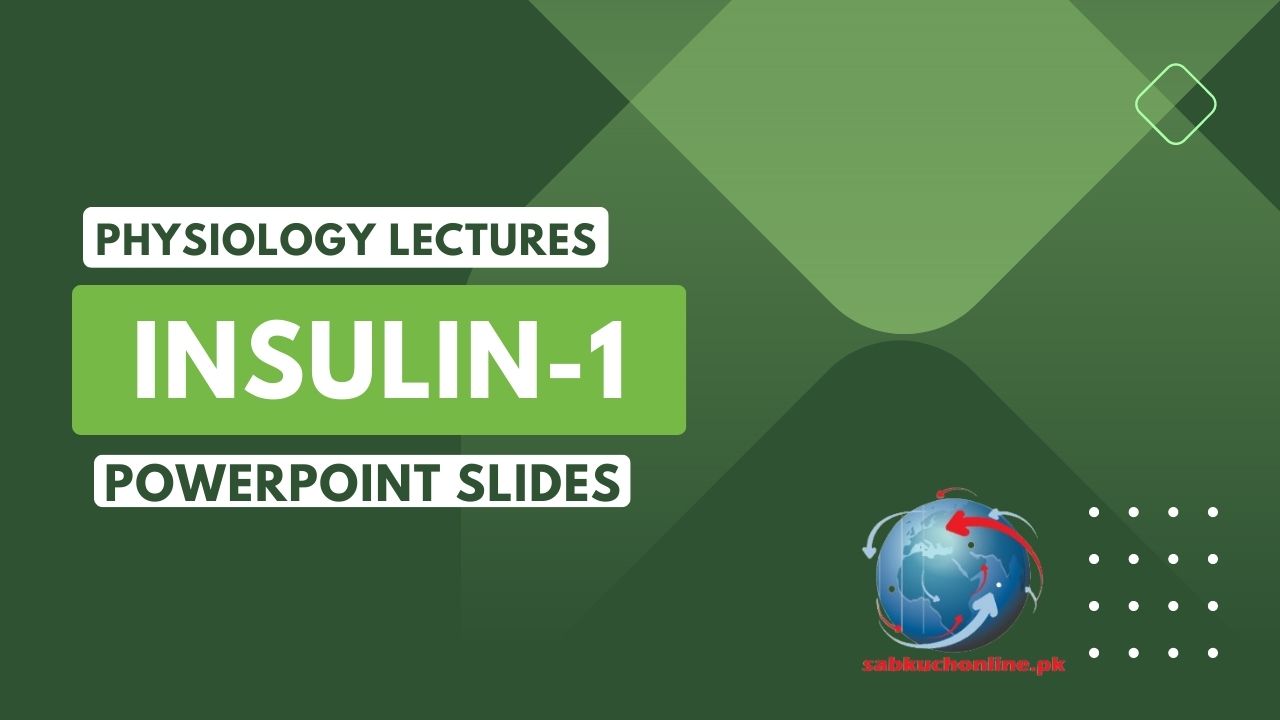Pancreas
- Pancreas secretes many hormones which are:
- Insulin
- Glucagon
- Amylin,
- Somatostatin, and
- Pancreatic polypeptide
The islets of Langerhans, which secrete insulin and glucagon directly into the blood.




Increased Blood Glucose Stimulates Insulin Secretion
- At fasting level of blood glucose of 80 to
90 mg/100 ml–the rate of insulin
secretion is minimal. - If the blood glucose concentration
increased to a level two to three times
normal and insulin secretion increases
markedly. - Release of preformed insulin from beta
cells in 1st 2-3 minutes after increase in glucose concentration.
- However, in another 5-10 minutes, the
insulin concentration decreases about
halfway back toward normal. - In next 2-3 hrs, insulin secretion rises a
second time and reaches a new plateau
because of synthesis of new insulin.

- Furthermore, the turn-off of insulin secretion is almost equally as rapid, occurring within 3 to 5 minutes after reduction in blood glucose concentration back to the fasting level.
Factors That increase or decrease insulin secretion








1.Increase glucose uptake into muscles:
- Under resting conditions, resting muscle membrane is slightly impermeable to glucose → muscle use fatty acids for energy, not glucose.
- Between meals, small insulin is released →small quantity of glucose enter
into the cell. - Moderate/Heavy exercise →increase muscle contraction →increase translocation of Glucose transporter 4 (GLUT 4) to cell membrane
→Glucose diffuse into the cell(But again, this process does not require
large amount of insulin. - Few hours after meal →↑↑ blood glucose →increase release of insulin
→rapid transport of glucose into muscle cells →now muscles use glucose
not fatty acids.
2.Increase glucose storage into muscles:
- Extra glucose that is not used by muscle →converted into Glycogen(Glycogenesis) for later use of energy provision.
3.Increase glucose uptake into liver:
- Insulin increase the uptake of glucose from the blood by the liver
cells. - When glucose diffuses into the liver cells → enzyme glucokinase
causes phosphorylation of glucose (phosphorylated glucose become
trapped now as now it cannot diffuse back through the cell
membrane).
4.Increase glucose storage into liver:
- Insulin cause conversion of glucose into glycogen by increase the activity of enzyme glycogen synthase.
5.Inhibit breakdown of Glycogen (Glycogenolysis)
- Insulin inactivates liver phosphorylase, the principal enzyme that causes liver glycogen to split into glucose.
6.Inhibit Gluconeogenesis
- Insulin also inhibits gluconeogenesis.
- It does this mainly by decreasing the quantities and activities of the liver enzymes required for glucose synthesis.
7.Increase conversion of Glucose into Fatty Acids
- When the quantity of glucose entering the liver cells is more than can be stored as glycogen or can be used for local hepatocyte metabolism, insulin promotes the conversion of all this excess glucose
into fatty acids.
Something important to remember!!!
- The BRAIN CELLS are also quite different from most other cells of the body in that they normally use ONLY GLUCOSE for energy
and can use other energy substrates, such as fats, only with difficulty. - Therefore, it is essential that the blood glucose level always be maintained above a critical level, which is one of the most important functions of the blood glucose control system.
- When the blood glucose falls too low, into the range of 20 to 50 mg/100 ml, symptoms of hypoglycemic shock develop, characterized by progressive nervous irritability that leads to fainting, seizures, and even coma.
